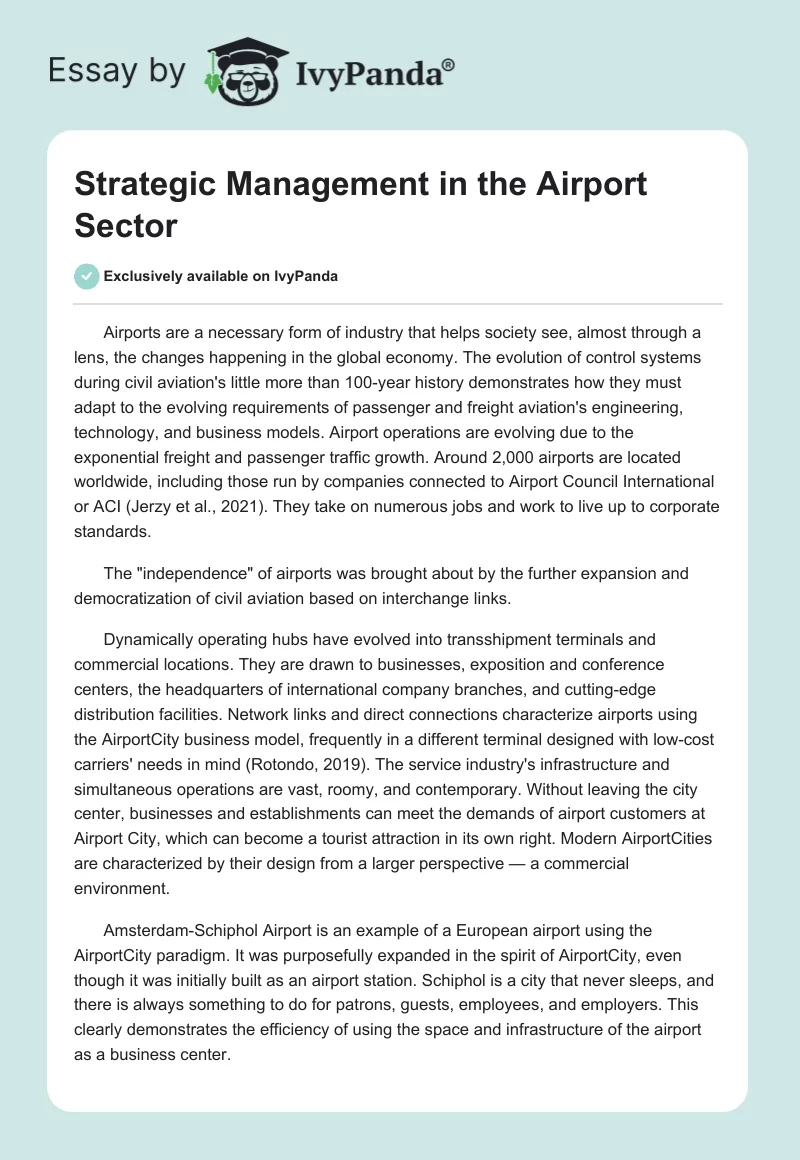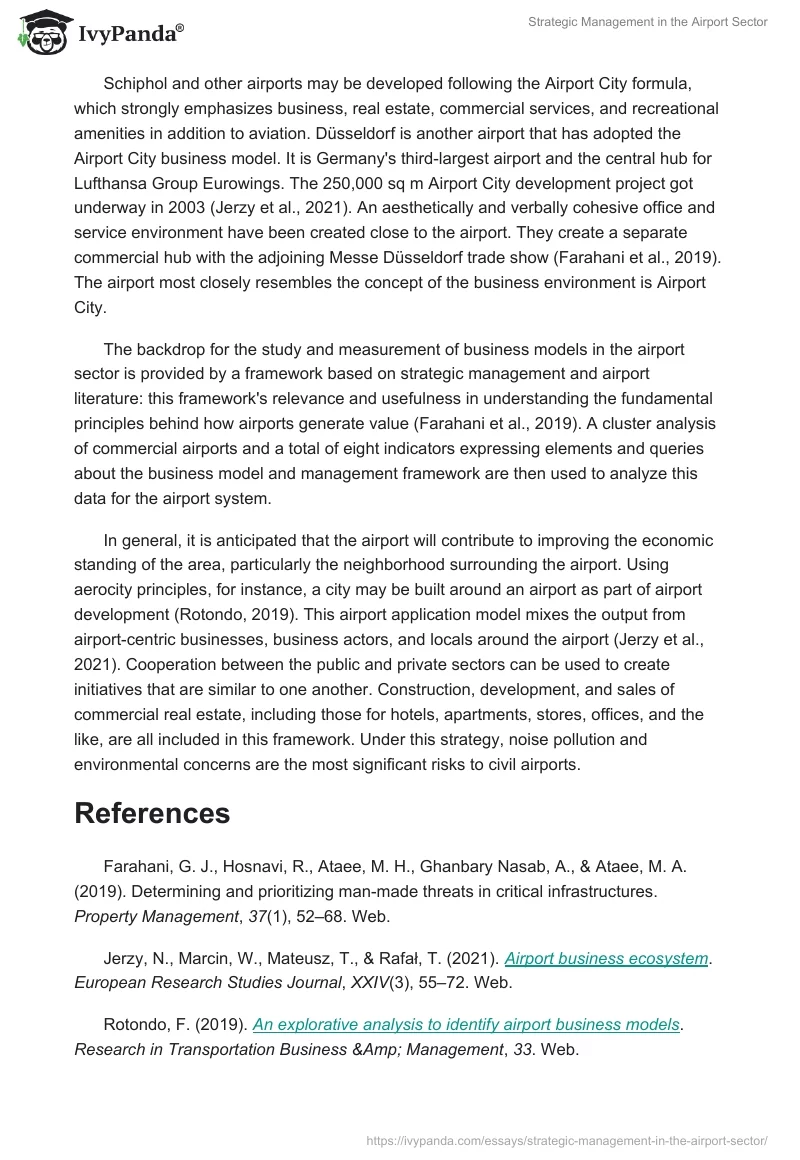Airports are a necessary form of industry that helps society see, almost through a lens, the changes happening in the global economy. The evolution of control systems during civil aviation’s little more than 100-year history demonstrates how they must adapt to the evolving requirements of passenger and freight aviation’s engineering, technology, and business models. Airport operations are evolving due to the exponential freight and passenger traffic growth. Around 2,000 airports are located worldwide, including those run by companies connected to Airport Council International or ACI (Jerzy et al., 2021). They take on numerous jobs and work to live up to corporate standards.
The “independence” of airports was brought about by the further expansion and democratization of civil aviation based on interchange links.
Dynamically operating hubs have evolved into transshipment terminals and commercial locations. They are drawn to businesses, exposition and conference centers, the headquarters of international company branches, and cutting-edge distribution facilities. Network links and direct connections characterize airports using the AirportCity business model, frequently in a different terminal designed with low-cost carriers’ needs in mind (Rotondo, 2019). The service industry’s infrastructure and simultaneous operations are vast, roomy, and contemporary. Without leaving the city center, businesses and establishments can meet the demands of airport customers at Airport City, which can become a tourist attraction in its own right. Modern AirportCities are characterized by their design from a larger perspective — a commercial environment.
Amsterdam-Schiphol Airport is an example of a European airport using the AirportCity paradigm. It was purposefully expanded in the spirit of AirportCity, even though it was initially built as an airport station. Schiphol is a city that never sleeps, and there is always something to do for patrons, guests, employees, and employers. This clearly demonstrates the efficiency of using the space and infrastructure of the airport as a business center.
Schiphol and other airports may be developed following the Airport City formula, which strongly emphasizes business, real estate, commercial services, and recreational amenities in addition to aviation. Düsseldorf is another airport that has adopted the Airport City business model. It is Germany’s third-largest airport and the central hub for Lufthansa Group Eurowings. The 250,000 sq m Airport City development project got underway in 2003 (Jerzy et al., 2021). An aesthetically and verbally cohesive office and service environment have been created close to the airport. They create a separate commercial hub with the adjoining Messe Düsseldorf trade show (Farahani et al., 2019). The airport most closely resembles the concept of the business environment is Airport City.
The backdrop for the study and measurement of business models in the airport sector is provided by a framework based on strategic management and airport literature: this framework’s relevance and usefulness in understanding the fundamental principles behind how airports generate value (Farahani et al., 2019). A cluster analysis of commercial airports and a total of eight indicators expressing elements and queries about the business model and management framework are then used to analyze this data for the airport system.
In general, it is anticipated that the airport will contribute to improving the economic standing of the area, particularly the neighborhood surrounding the airport. Using aerocity principles, for instance, a city may be built around an airport as part of airport development (Rotondo, 2019). This airport application model mixes the output from airport-centric businesses, business actors, and locals around the airport (Jerzy et al., 2021). Cooperation between the public and private sectors can be used to create initiatives that are similar to one another. Construction, development, and sales of commercial real estate, including those for hotels, apartments, stores, offices, and the like, are all included in this framework. Under this strategy, noise pollution and environmental concerns are the most significant risks to civil airports.
References
Farahani, G. J., Hosnavi, R., Ataee, M. H., Ghanbary Nasab, A., & Ataee, M. A. (2019). Determining and prioritizing man-made threats in critical infrastructures. Property Management, 37(1), 52–68. Web.
Jerzy, N., Marcin, W., Mateusz, T., & Rafał, T. (2021). Airport business ecosystem. European Research Studies Journal, XXIV(3), 55–72. Web.
Rotondo, F. (2019). An explorative analysis to identify airport business models. Research in Transportation Business &Amp; Management, 33. Web.

